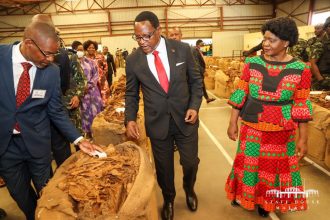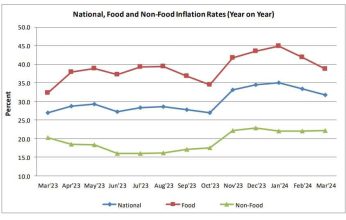Covid-19 shrinks mining sector growth
The coronavirus (Covid-19) pandemic has hit hard the extractives industry, with a latest report warning that some mining firms will shut down should the pandemic not be eradicated and the current economic situation stagnate in the next year or two.
The industry, according to the Malawi Extractive Industry Transparency International (2017/2018) report which has a forecast on performance of the sector in 2021, all in areas of forestry, transport as well as mining and quarrying will see growth shrinking.

With the pandemic, companies in the sector are unable to import parts of machinery and some raw materials, delays in receipt of already ordered machinery or raw materials, flight bans, and reduced investments to between 30 percent and and 50 percent.
While in 2019, the Forestry sector grew by 4.3 percent, in 2020, growth was expected to be one percent, down from the earlier projection of 5.2 percent. Further, the forestry sector contribution to GDP in 2019 was at 6.7 percent and is projected to shrink to 6.5 percent and 6.3 percent in 2020 and 2021, respectively due to effects of Covid-19.
It reads: “The mining and quarrying sector grew by 4 percent in 2019, a slight revision from the initial estimate of 3.9 percent. For 2020, the sector is projected to grow by 3 percent against an initial projection of 5 percent.
“The downward revision reflects the devastating effects of the Covid-19 pandemic which is expected to disrupt work in the sector and also derail construction works which happen to be a major source of demand for the mining and quarrying sector. In 2021, the sector is projected to grow by 3.1 percent.”
It adds that in 2020, growth for Transportation Sector was estimated to be 0.9 percent from the February projection of 4.4 percent, but growth for the sector in 2021 has also been revised downwards to 3.8 percent from the initial projection of 4.9 percent.
Concerns include reduced sales to between 30 and 50 percent, cashflow problems due to poor sales, delays in implementation of planned activities, reduced output since staff have to work on shift and continued payment of full salaries without any Government subsidy.
“In the event of non-eradication of the covid-19 pandemic and stagnation of the current economic situation, activities would be threatened after between 1-2 years. Government measures that would be most helpful in coping with the Covid crisis/ recovery plans:-
“Tax waivers or temporary tax breaks, cash transfers, reduction of tariffs on imported inputs, extension of the Licences for the period affected by Covid19, financial programmes, such as low interest credit line or credit guarantees; Employment programmes, temporarily reduced employment, some employees laid off.”
But spokesperson in the Ministry of Mining, Sangwani Phiri said there were no programmes at the moment on Covid 19 for the mining sector.
“We really would have loved to have such programmes, so we are looking at a funding window for that. We haven’t visited the companies to establish how Covid 19 is affecting operations,” he said briefly.
Recently, Ben Kalua , an economics professor at Chancellor College—a constituent college of the University of Malawi, said Covid-19 may affect the projected growth and impact inflation rate if the Affordable Inputs Programme (AIP) faces performance hitches.
He stated that if the outcome from AIP will be as anticipated, then inflation rate will likely remain in single digits, which he said should translate into moderated interest rates.
In 2020, inflation rate averaged 8.6 percent, way below the 9.4 percent registered in 2019.
The benchmark rate or base lending rate is at 12 percent following a recent downward revision from 13.5 percent.






One Comment